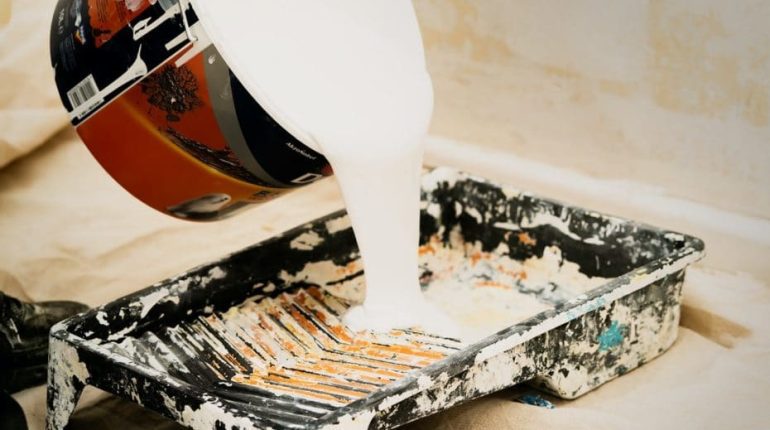
- Phi Dang
- /
There are thousands of colours and shades so how do you choose the right paint and finish?
Here are 7 Top Tips to choose the right paint for your home:
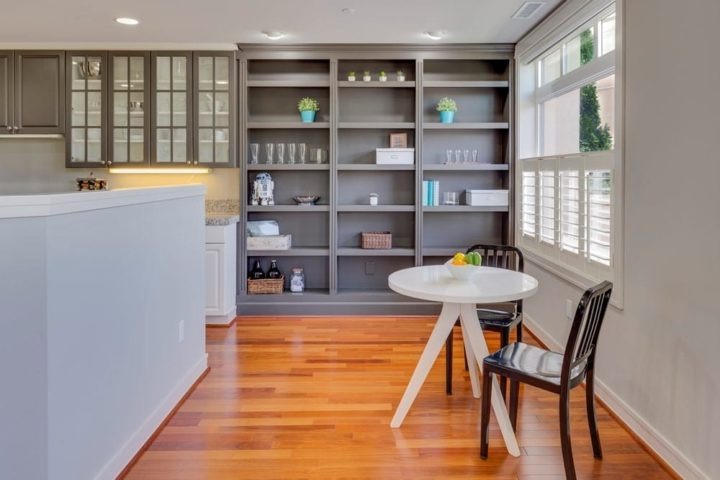
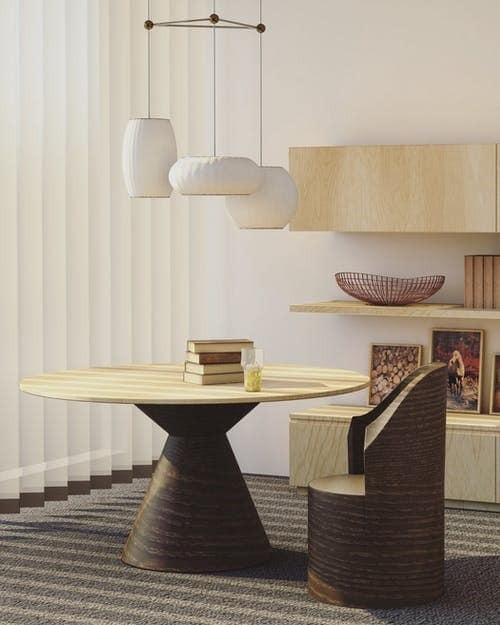
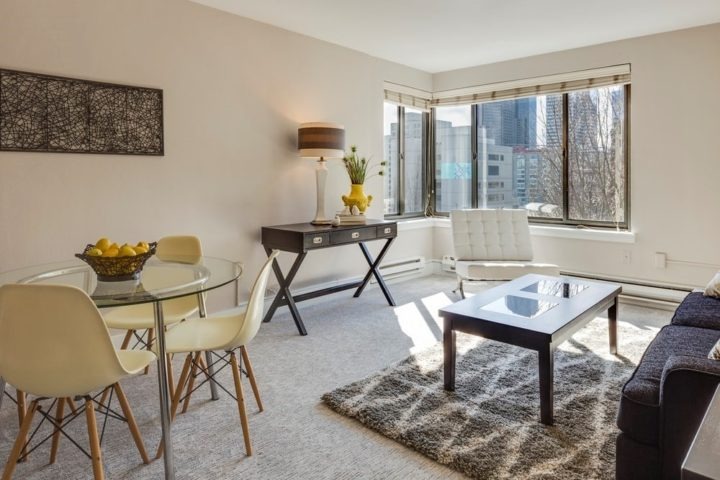 A neutral design theme creates light and space in this tiny apartment. To brighten the look, yellow is added thoughtfully.
Here are some colour suggestions for a small room or space:
A neutral design theme creates light and space in this tiny apartment. To brighten the look, yellow is added thoughtfully.
Here are some colour suggestions for a small room or space:
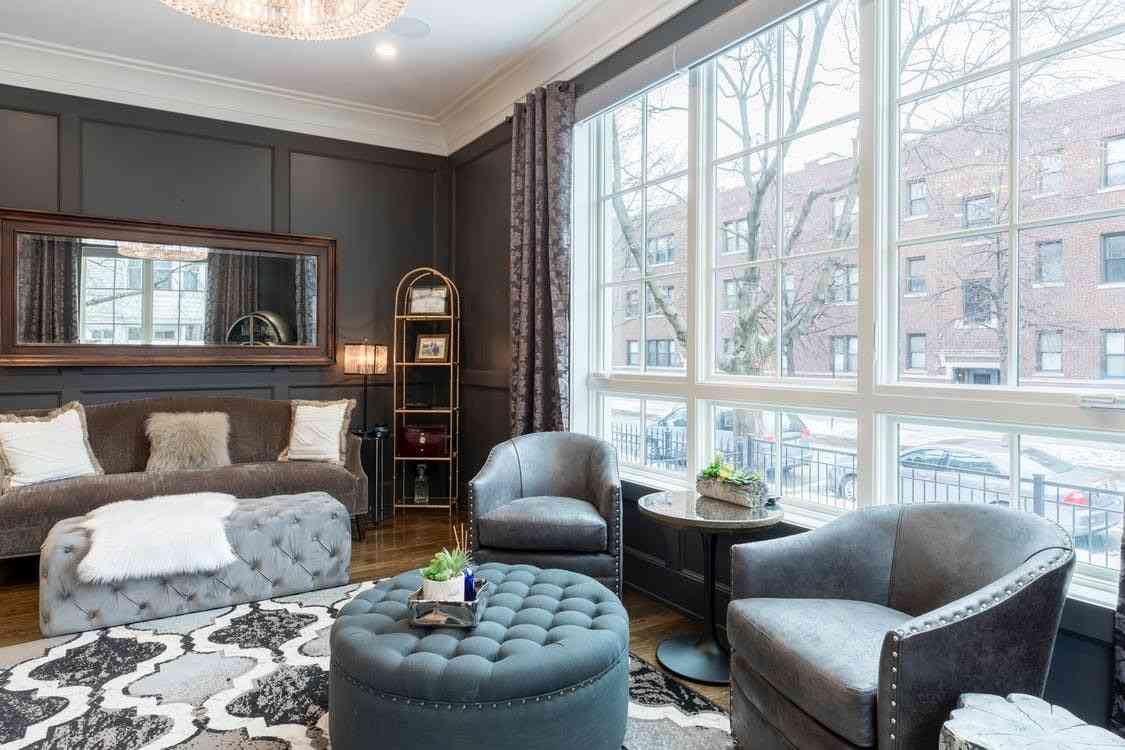 A dark grey wood panelling adds sophistication and class to this gorgeous study with plenty of natural light
A dark grey wood panelling adds sophistication and class to this gorgeous study with plenty of natural light
1. Consider the lighting
The amount of natural light in a room can influence the paint you choose. Light can play tricks with our perception of colour. The basic rule is that we only see shades of colour if there is sufficient lighting. For them to be more than just degrees of blackness, light must hit the surface and be reflected. This means, if you put a dark colour into a dark room, the result will be dark and gloomy.Here’s a general rule:
- A dark room should not be painted with white paint because the white will look like a dull grey. A south-facing dark room will look better with bright colours. If you want to be different you can choose a deep colour to create an intimate space.
- A bright room with plenty of natural light can get away with any colour or shade. White may be too clinical, but you can still get away with it.
2. Match wall to floor
The floors are the foundation of your home. A good way to find the right paint for your home is to match the walls to the floors.How to match wall colours to hardwood floors
Hardwood floors are versatile, easy to maintain and looks great in any home. Nowadays, hardwood floors can come in numerous designs, types of material, shades, and patterns. Read more about matching hardwood floors to wall colours here. Soft grey calms the red tints in this hardwood floor.
Light hardwood floor
Light hardwood is bright, airy, and elegant. They expand the dimensions of a room and evokes an atmosphere of space and flow. Neutral colours: Create space and light. Choose a high-gloss or gloss paint to bring out the shine in the floors White: Looks good in any type of floors but is extremely complementary to light hardwood floors. White paints come in various shades and tones so there’s no need to restrict yourself to clinical white. Grey: If you don’t like white walls, a soft grey can give the room some definition. Look for grey with green, pink, or blue undertones for a more fabulous look.Dark hardwood floor
Dark hardwood floors are more suitable for bigger rooms because the darker colours can make a room feel smaller. To choose the right paint colour that best suit your hardwood, check the undertones of the stain. Bright and light colours complement dark hardwood floors. Go for colours like white or off-whites, earthy tones, and dark beiges for a classier look.Carpet
Rule # 3 in interior design is about creating aesthetically pleasing spaces through harmony. Harmony is created by matching colours in the same scheme. For example, a blue-toned carpet will go well with a light blue or grey wall.
3. Choose the right paint for a small room
Not everyone has the luxury of a big house. If the room is small, paints with high reflectance value (LRV) can reflect and bounce natural light around the room to create an illusion of space, airiness, and brightness. A neutral design theme creates light and space in this tiny apartment. To brighten the look, yellow is added thoughtfully.
Here are some colour suggestions for a small room or space:
A neutral design theme creates light and space in this tiny apartment. To brighten the look, yellow is added thoughtfully.
Here are some colour suggestions for a small room or space:
- Neutrals and pastel colours are perfect for creating ‘space’ and ‘light’
- Sea-foam greens pair well with creams, yellows, and greys
- Pale blues and greens create space, calmness, and cool vibes.
- Combination of cream and light blue are good for conveying spaciousness.
- Lemon and creamy yellows can work in smaller rooms but stick to softer and lighter tints.
Other ways to enhance a small room
Complement the paintwork with some clever design ideas. Here are some of our favourites:- Paint the walls and skirting in the same colour elongates the ceiling and makes a room look ‘taller’ and ‘wider’.
- Paint skirting, doors, architraves, and doors in white or another light neutral hue to make a small living room expand and look larger.
- Extend the paint from wall to ceiling to create an impression of a large space
- Choose a glossy finish to reflect more light in a small dark room.
- Consider a monochromatic colour scheme to allow the eye to move easily around the room. Use different tones of the same colour to accent different parts of the house.
- Use décor and furnishings to enlarge the room. Keep window treatments to simple and unfussy. Use throw cushions with vertical patterns to elongate a room. Add additional lighting to a south
4. Painting with white
Choosing the right white can be confusing because there are so many shades of white on the market. Your design theme, furniture, lighting, and style of the home can determine the best white to choose. Checking the amount of natural light, the room gets is a good way to choose the right paint. Cool whites can calm down a brightly lit room. A dark room will look brighter with warm whites. Don’t get too hung up with white. White is white. They come in cool shades or warm shades, but they are essentially still white. COOL WHITES – are subtle grey, beige, or blue undertones. They are brilliant for recreating a contemporary and chic look in homes and spaces. If you are aiming for a minimalist look, this is the white of your choice. WARM WHITES are comforting and cosy peach, yellow and pink undertones. They create an earthy, and natural feel to the home. They are popular choices for country or art-deco style homes.5. Choosing a grey
How do you choose the right paint for greys? Like whites, grey is a popular colour choice for walls, but they also come in numerous shades. COOL GREYS have blue undertones and pair well with navy, teal, and turquoise. They add character to a room by giving it a clean, crisp feel. They are suitable for modern and contemporary designs and if you want to create an impression of space. WARM GREYS add warmth and cosiness to a room. They complement a neutral palette and work well in a room that is south-facing or a room that has minimum lighting. LIGHT/SOFT GREYS are soft and glowing. They add calm to a room and are ideally paired with a neutral or pastel palette. They are a popular alternative to whites. DARK GREYS are bold statements. They are often used as a dominant colour for a feature wall and pair extremely well with bright bold colours. A dark grey wood panelling adds sophistication and class to this gorgeous study with plenty of natural light
A dark grey wood panelling adds sophistication and class to this gorgeous study with plenty of natural light






